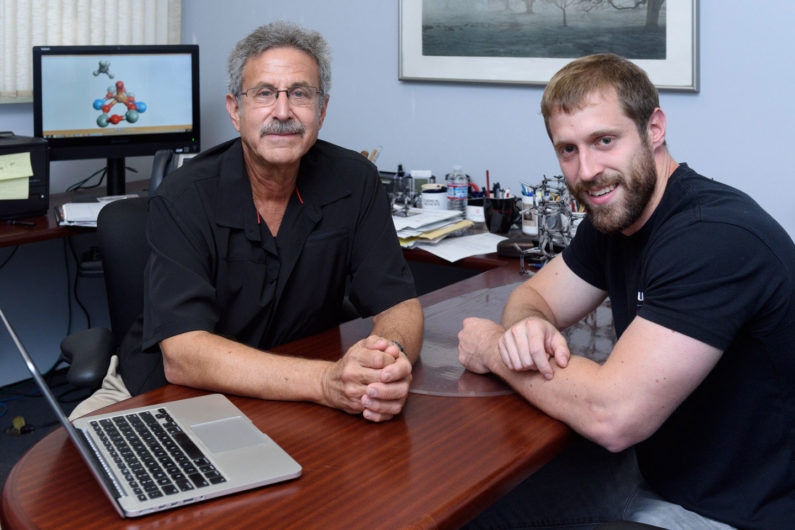Sep 21 2016
 Stanford Professor Edward Solomon and graduate student Benjamin Snyder have published new findings on zeolites, ordinary crystalline materials that can transform methane into methanol without added heat or pressure. (Image credit: L.A. Cicero)
Stanford Professor Edward Solomon and graduate student Benjamin Snyder have published new findings on zeolites, ordinary crystalline materials that can transform methane into methanol without added heat or pressure. (Image credit: L.A. Cicero)
Chemists at Stanford University have solved an age old mystery that takes them one step closer to a cleaner, more energy-efficient way to produce methanol, an essential industrial chemical used in products such as plastics, paints, and glues.
Scientists have long known that some zeolites – a regular crystalline material – could have the capacity to convert methane into methanol at room temperature. This would then override the existing process where high temperatures and pressures are required.
The question is - how do zeolites work?
Zeolites are inexpensive and used in everything from catalysts to cat litter. In the 1990s, scientists showed that certain iron-containing zeolites have an outstanding ability to convert methane into methanol at room temperature. Our study finally explains how that chemical transformation occurs.
Benjamin Snyder, Graduate Student, Stanford University
The Stanford team partnered with researchers at the University of Leuven (KU Leuven) in Belgium to conduct the research.
The Promise of Zeolites
Zeolites are primarily made up of aluminum, oxygen, and silicon. Their porous molecular structure makes them suitable to capture pet odors and unnecessary particles, such as radioactive waste. Zeolites are also used as catalysts to make diesel fuel, gasoline, and other petrochemical products.
In the 1990s, Russian scientists performed several experiments on synthetic zeolites made with iron. They found that when methane gas was directed on iron zeolites, they instantly started cranking out methanol.
Iron zeolites are promising catalysts for low-temperature methane conversion, but despite nearly three decades of research, it’s unclear how they work. Finding an efficient catalytic process for converting methane into methanol could have far-reaching economic implications.
Edward Solomon, Professor of Chemistry, Stanford University
Active Sites
Finding the active site on iron zeolite crystals where catalysis happens is a huge challenge for researchers.
“The main difficulty is figuring out how to differentiate an active site from an inactive ‘spectator’ site on the crystal,” Snyder said. “Both contain iron, and that makes it very difficult to distinguish one from the other using conventional methods.”
The Stanford team applied a number of advanced spectroscopy methods formulated by Solomon’s group to investigate iron-containing proteins from microbes and plants. That method enabled them to identify the active site in the zeolites and develop comprehensive computational models of its structure.
“We were then able to show what makes the active site so reactive,” Snyder said. “We found that the iron core of the active site is locked in an unusual, constrained geometry by the zeolite crystal, and this leads to exceptional reactivity with methane.”
A key first step in developing eco-friendly catalysts at scale is, understanding the relationship between catalyst structure and reactivity, he said. However, there are several technical challenges to overcome.
For instance, a large quantity of the methanol produced at room temperature gets trapped within the porous zeolite molecule and has to be extracted using water.
Other researchers can take the design principles we define in our study and run with them. Perhaps one day we’ll be able to convert natural gas to methanol right at the point of extraction, without having to transport the gas to industrial-scale plants that require a massive input of energy. That technology may be many years off, but our findings represent an important step forward.
Benjamin Snyder, Graduate Student, Stanford University
Former Stanford postdoctoral researcher Pieter Vanelderen, now at KU Leuven, is co-lead author of the study. Other authors are Lars Böttger of Stanford, and Max Bols, Simon Hallaert, Liviu Ungur, Kristine Pierloot, Robert Schoonheydt and Bert Sels of KU Leuven.
The research received funding from the U.S. National Science Foundation and the Research Foundation–Flanders in Belgium.